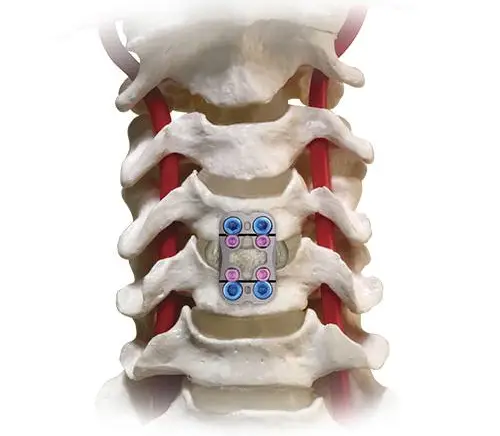Spine Surgeon
Laminoplasty Surgery in Mumbai
Laminoplasty
Laminoplasty Surgery in Mumbai is a surgical procedure commonly used to address cervical spinal stenosis and relieve symptoms such as neck pain and arm weakness. By creating additional space in the spinal canal, laminoplasty aims to alleviate pressure on the spinal cord and nerves, restoring function and reducing discomfort. Laminoplasty is often considered when conservative treatments have failed to provide adequate relief from symptoms or when there is evidence of progressive neurological deficits.
Who is the good candidate for laminoplasty?
- Candidates typically experience symptoms of cervical spinal stenosis, such as neck pain, arm weakness, or numbness.
- Prior conservative treatments have been unsuccessful in providing significant relief.
- Progressive neurological deficits or worsening symptoms despite non-surgical interventions may prompt consideration for laminoplasty.
- Laminoplasty aims to alleviate pressure on the spinal cord and nerves by creating additional space within the spinal canal.
- The procedure preserves spinal stability while decompressing the spinal cord, offering potential relief and improved function for eligible candidates.
What is the procedure?
Laminoplasty is a surgical procedure performed in the cervical region to alleviate spinal cord compression. This is a motion-preserving procedure and is utilized as an alternative to spinal fusion in selected patients. During the procedure, the surgeon creates more space within the spinal canal by hinging open the vertebrae. This is achieved by making incisions on one side of the lamina, which is then lifted and secured in an open position with plates or spacers. By widening the spinal canal, laminoplasty aims to relieve pressure on the spinal cord and nerves, thus alleviating symptoms such as neck pain, arm weakness, or numbness. This procedure preserves spinal stability while decompressing the spinal cord, offering potential relief and improved function for eligible candidates.
What steps are involved in the recovery process after undergoing laminoplasty surgery?
Recovery from laminoplasty involves managing pain initially with medication and gradually transitioning to physical therapy for strength and mobility. Patients are advised to avoid strenuous activities and heavy lifting for several weeks. Follow-up appointments with the surgeon are crucial for monitoring progress. Most patients can resume normal activities within a few months but should follow post-operative instructions closely for optimal recovery.
What are the advantages of laminoplasty?
- Alleviation of spinal cord compression: By creating additional space within the spinal canal, laminoplasty helps relieve pressure on the spinal cord, reducing symptoms such as neck pain, arm weakness, or numbness.
- Preservation of spinal stability: Unlike some other spinal procedures, laminoplasty aims to maintain the stability of the spine while decompressing the spinal cord, reducing the risk of instability or deformity.
- Potential for improved function: By alleviating spinal cord compression, laminoplasty may lead to improved mobility, strength, and sensation in the neck, arms, and hands, enhancing overall quality of life.
- Minimally invasive options available: Advancements in surgical techniques have led to minimally invasive laminoplasty procedures, resulting in smaller incisions, reduced tissue damage, and faster recovery times for eligible candidates.
At Synapse Spine in Mumbai, top-notch spine surgeons are dedicated to providing exemplary care with their expertise and commitment. With a focus on personalized treatment plans and innovative approaches, patients can expect world-class spinal care tailored to their needs. Experience exceptional Laminoplasty Surgery in Mumbai by booking your appointment with the esteemed spine surgeons at Synapse Spine today.

